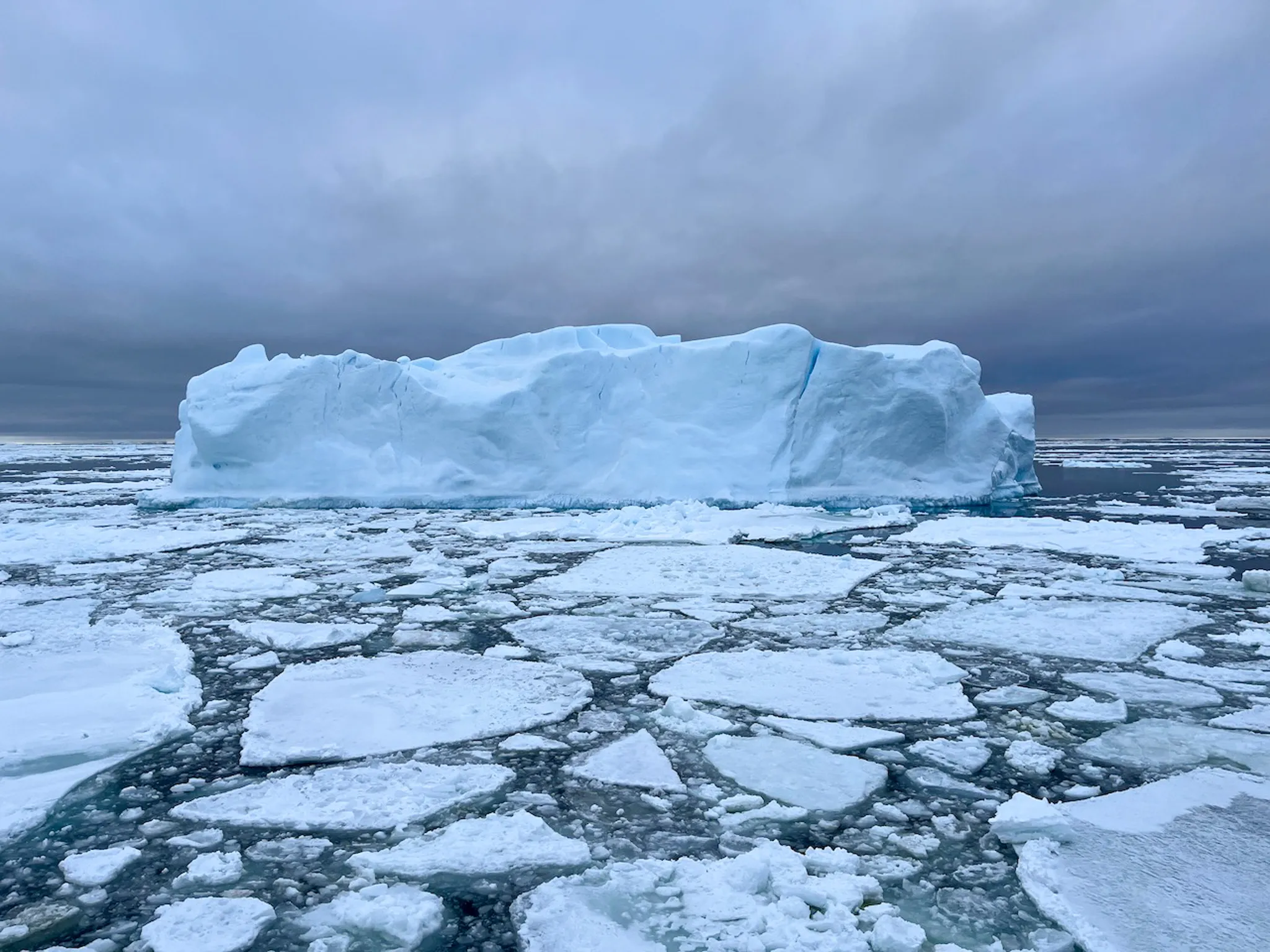Sir Douglas Mawson’s story is easily one of the greatest survival stories in exploration history. Not just Antarctic exploration, but all exploration.
But, whilst our collective imagination is filled with tales of Ernest Shackleton’s Endurance epic, or Robert Falcon Scott’s grand tragedy, the story of Douglas Mawson’s Australasian Antarctic Expedition (AAE) has largely slipped between the cracks. We might know the name, but we don’t know the story behind it. There are a few reasons for this, but the real reason could be that it is far less palatable. Shackleton overcame enormous odds and willed into existence a happy ending. Scott’s story meanwhile was one of missed chances and tragedy, but all for the glory of England.
Meanwhile, Mawson’s story is different.
Sir Douglas Mawson, quite simply, walked through hell.
It is an incredible story and well worth the read, however, we must warn you that it has dark moments and it is relentless in its oppression. After all, this is the story of a man who survived when the universe clearly wanted him dead.
The Beginnings
The road to Antarctica for Douglas Mawson wasn’t straightforward. In fact, Antarctica was never the goal. Born in England but emigrating to Australia as an infant, his interest was in the natural world. At age 16 he enrolled in the University of Sydney, graduating a few years later with two degrees in Engineering and Geology/Mineralogy. It was here he also met his mentor, a geologist called Edgeworth Davis. A few years later he was awarded a Doctorate of Science and became a lecturer at the University of Adelaide.
Whilst his research took him out into the field for expeditions, his life was an academic one. That was, however, until Shackleton came calling. Stopping in Australia on his Nimrod expedition and keen to secure grants from the Australian government, Shackleton was introduced to Edgeworth Davis. The grant was approved with assistance from Davis and he was consequently asked to join the expedition as its Director of Science. Davis immediately contacted Mawson who agreed to join as well. Whilst they both only originally planned to stay with the Nimrod to and from Antarctica, both Davis and Mawson were persuaded by Shackleton to join the trip as full overwintering expeditioners.
They both quickly made their mark in history. Before the winter set in Shackleton assigned Davis, Mawson and a doctor named Alistair Mackay to climb the summit of Mt Erebus. Erebus was a nearby 3,790m high volcano and had been discovered on a previous journey by Sir Robert Scott. They set off with a support team and made it back to camp 6 days later a success. The climb was brutal, and they had slid most of the way back down the mountain to beat advancing bad weather, but the mountain had been climbed.
Now a proven team, the following summer they were chosen again for another journey. So, that summer, whilst Shackleton set off for his South Pole attempt, Davis, Mawson and Mackay headed off to find the Magnetic South Pole. Shackleton narrowly failed in his journey, deciding to turn around only 150km from the Pole. It was a tough decision, with Shackleton writing to his wife *“I thought, dear, that you would rather have a live ass than a dead lion.”* Meanwhile, Mawson and his team had more success. They dragged their supplies on sleds across the snow themselves, they manhauled over 460kms to reach the magnetic South Pole, which at that time was over land. Marking the location and doing their measurements, they then immediately turned around for camp. After all, they had only 15 days to make the return journey before the *Nimrod* departed. Dragging their sleds through blizzards and endless hours each day, they fell short by a few miles. In fact, the Nimrod passed them by during a blizzard. Luckily for them however the ship did one last sweep before departing and spotted them, sailing in to pick them up and take them home.

Australasian Antarctic Expedition
Antarctica captivated Mawson and his reputation as a scientist and explorer spread. The following year, recommended by his former shipmates, he was offered a spot by Scott on the now infamous *Terra Nova* expedition. However, not impressed by the scientific program of the expedition, and not at all interested in the race for the South Pole, he turned it down. Instead, he began planning his own trip south. This trip was to become the Australasian Antarctic Expedition (AAE).
Mawson’s interest was in the unexplored region of Antarctica that lay just south of Australia, and ‘Australia’s own’ expedition was quickly funded by government grants and private interests. A scientifically focused expedition, it aimed to map the coastline and the interior of this region. Boarding a ship called the *Aurora*, the expedition headed south on the 2nd December 1911, only two weeks before Scott (already in Antarctica) began his fatal push for the South Pole.
The AAE was up against it from the very beginning. On approach in Antarctica, they were soon surrounded by gigantic ice cliffs and were unable to land. Sailing along the coastline and looking for a place to come ashore, they eventually found a small inlet they named Commonwealth Bay and landed at a place they called Cape Denison. It was here, at Cape Denison, that they established their main camp.
In hindsight, it wasn’t the best choice. They couldn’t have known it at the time, but this region of Antarctica is at sea level the windiest place on earth. With the average wind speed at Cape Denison being 80km/h, the highest wind gusts they recorded here reached a staggering 320km/h. This soon laid waste to their plans, with the aircraft they brought along becoming immediately useless and the communications towers they brought were wrecked. Despite this brutal beginning they overwintered here, only venturing out when the wind dropped below 100km/h to do experiments and collect supplies. Remote and alone, they were cut off from the outside world. This also meant they were cut off from the drama going on elsewhere in Antarctica with Scott (now missing) and Amundsen claiming the South Pole first.
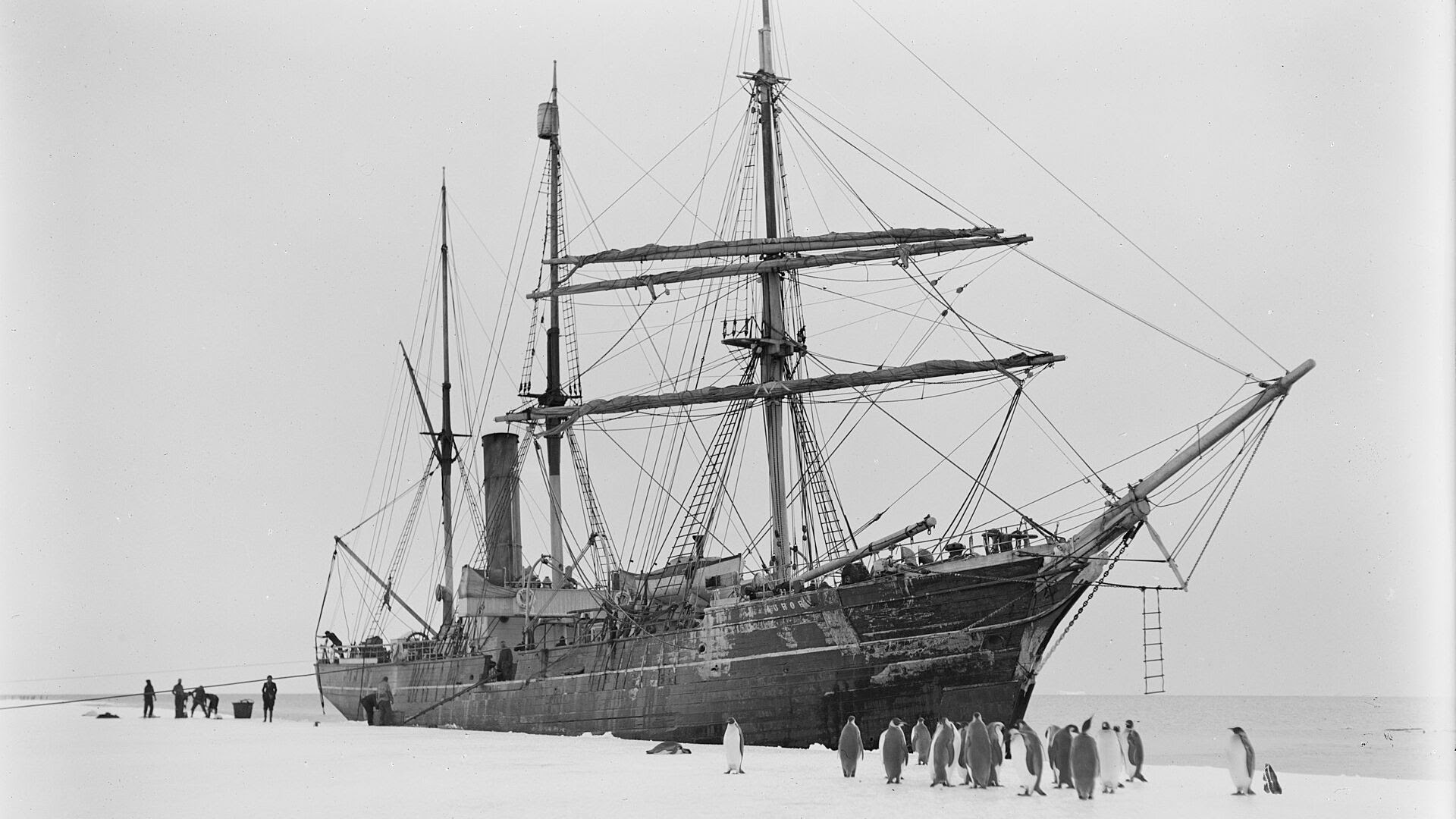
The Far Eastern party
When the winter finally passed the expedition program could begin. Mawson decided to split the team into groups of three, with each team heading out to map and explore in different directions. He kept the longest and toughest journey for himself, not wanting to put that responsibility or risk on any other man. Joining him in this party, called the Far Eastern Party, was a Swiss ski jumping champion named Xavier Mertz and Belgrave Ninnis, an English Royal Fusilier soldier. Given the distance involved, they used dog teams to help pull the sleds.
For the first five weeks of the trip, things went pretty smoothly. Well, smooth by comparison. They had close calls with crevasses hidden under the ice, almost losing a sled and the dogs on one occasion and almost losing Ninnis on another. They got stuck in a blizzard for days and there were issues with snow blindness, infected body parts and frostbite. Even when it was calm it was rough, like the ice ridges formed by the wind reaching over three feet high, forcing them to drag their sleds up and down cliffs. But, despite all of these challenges, they mapped their way through this unknown land for over 500km, collecting samples as they went.
As they progressed, the main concern for Mawson was the crevasses. These giant holes in the ice sheet frequently stopped the party in their tracks. Even worse was that these giant ice pits were often concealed, covered by a thin layer of snow which formed an ice bridge. Unable to be spotted, too much weight on the wrong patch of snow could see the whole thing collapse and send an unlucky person plunging deep into the earth. To protect against this likelihood the party devised a new system. Mertz would scout slightly ahead on skis, the lighter weight of a single skier distributed evenly across the snow. When he spotted a crevasse he would then signal back to the men, pulling the sleds behind. Mawson went next, for his sled was the most likely to collapse the snow bridge over any crevasse. When he safely crossed, Ninnis would then follow last of all. Leaving one broken sled behind, they reallocated the most essential equipment (tents, rations, dog food etc) to the sled Ninnis would lead, giving Mawson the heaviest and least essential items. That way, should a crevasse open up and Mawson lost in it, at least the other two would have the most important equipment to get home.
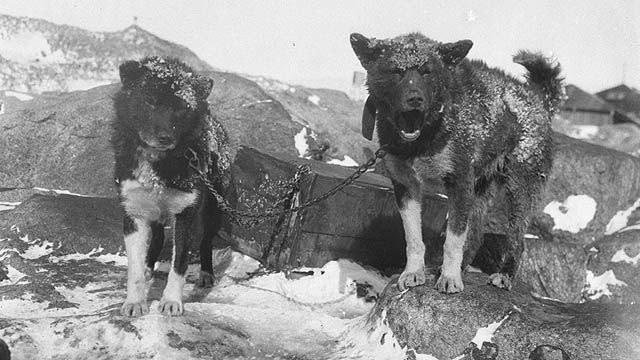
The Crevasse
The following day after reallocating the supplies, they set off again. Around midday, Mertz spotted a crevasse and let the team know. Mawson was standing on his sled doing navigation work and carefully passed over without incident. He saw Ninnis on foot behind him, jogging alongside his lighter sled to lighten the load. A minute later, with Mawson still doing his navigation, he looked up. Mertz was standing out in front of him, looking back with horror on his face.
Mawson turned around. It was completely empty. The entire dog team, including Ninnis, had disappeared.
Immediately turning back they soon saw a 4 metre wide hole in the snow, revealing a massive chasm beneath it. Lying on the edge and peering 50 metres down in the gloom they could see a paralysed dog lying on an ice shelf, whimpering. A few metres below that, another dog lay dead on another outcrop. And below that, as the crevasse continued, nothing but darkness. They shouted for hours, but got no reply. Swallowed by the abyss was Belgrave Ninnis. He was only 25 years old.
To make matters worse, they also lost their six best dogs and the sled. This was the sled filled with all their food and vital equipment. They were over 500km away from Cape Denison. They now only had enough food for 10 days, and no dog food at all. They also lost some of their clothing and even the poles for their tent. They were in serious trouble.
After taking note of the position of Ninnis’ resting place and saying their prayers, they immediately turned back and headed to where they had left the broken sled the day prior. Using some of the wood from the sled and the runners from underneath, as well as other equipment like ski poles, they managed to make themselves a usable shelter.
They had no choice but to immediately head for Cape Denison. To do this, they were faced with two options: They could head for the coast or head inland. The coast provided an option to spot the Aurora should they be late as well as the potential for some food with penguins or seals. But, the sea ice was unreliable and the journey was much longer. With this in mind, they decided to take the inland route, which was shorter but provided no food. In order not to starve, their only option would be to eat their dogs.
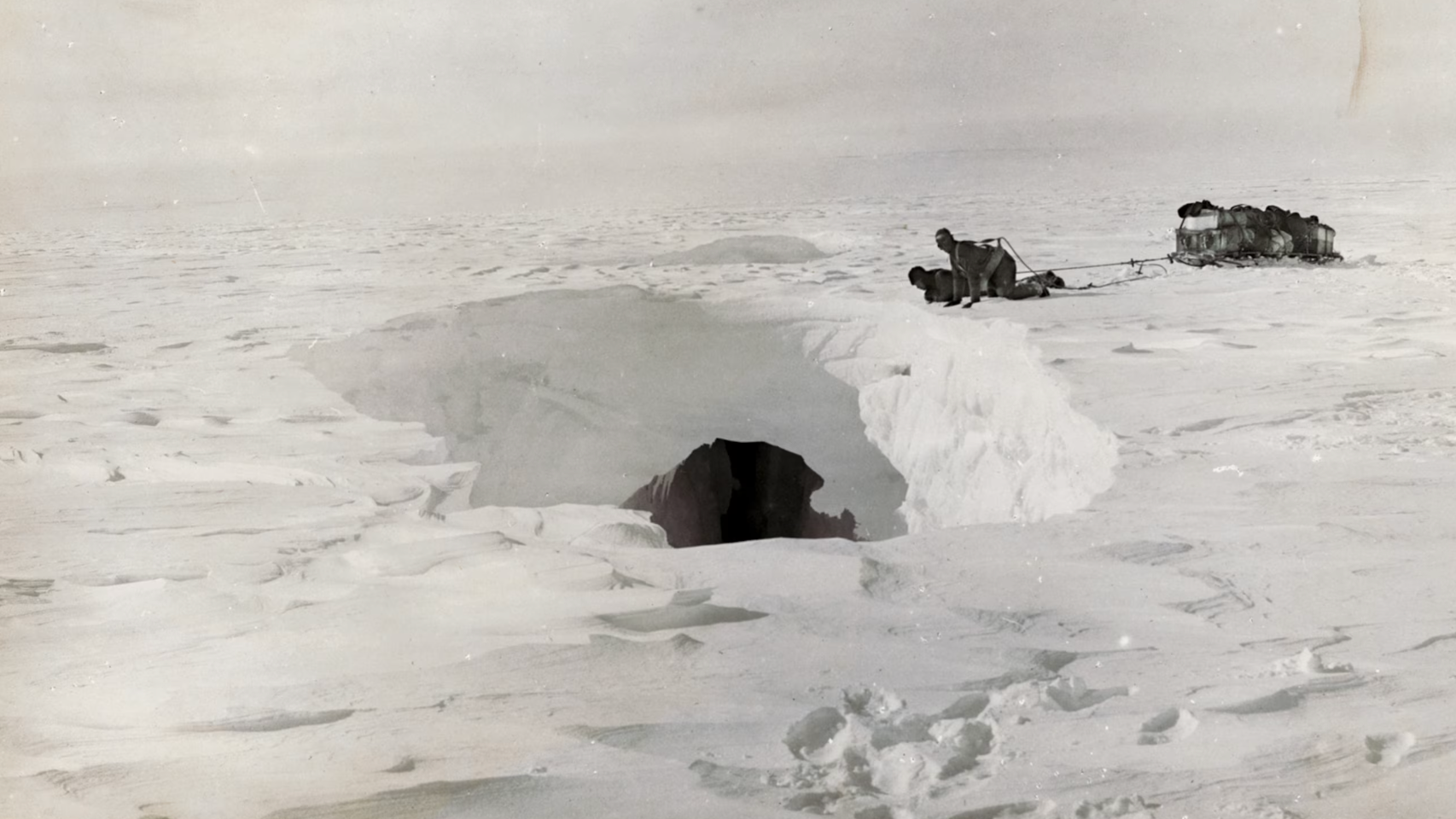
The Descent
Starting off back for the main camp, they made good progress initially, travelling up to 25km a day in the darker hours when the snow was firmer. Every few times they made camp they would then have to shoot one of their dogs for food. The meat was nearly inedible, tough and stringy and difficult to cook, but they needed to use every last bit of each dog they killed. Even the paws were boiled into a jelly to be later eaten, with the toughest cuts going to the dogs to keep them going. The only piece of meat from the dogs that was easy to eat was the liver, which they both savoured. It still wasn’t enough, and with low energy levels and the dogs slowly starving, they needed to cut their weight. They left behind almost anything immediately essential, including sadly all their photography equipment and photographic slides.
Their health began to suffer. They both had frequent nausea and abdominal pain, and the skin started falling off their legs. A few weeks later, with the men running low on energy and in pain, the very last dog was killed.
Two days after that, Mertz started to become seriously unwell.
What they didn’t know at the time, as it wasn’t discovered until years afterwards, was that a dog’s liver contains high amounts of Vitamin A. By frequently ingesting it, both men began to suffer from Hypervitaminosis A. Quite basically, they gave themselves a Vitamin A overdose. Over the next week, with Vitamin A levels stored in their livers at dangerous levels, both men quickly began to fall ill. The skin under their clothing, in their armpits and around their genitals became raw, and all their nails fell off. Mertz seemed to suffer most of all, and soon began to suffer from hallucinations. Not long afterwards, he lost the motivation to move at all. Mawson was stuck, desperately trying to get back to camp but unwilling to leave without his teammate.
Conditions got only worse. They were sick, starving, raw and rotting. Still mentally impaired, Mertz contracted frostbite in his fingers but refused to believe it. Trying to prove his fingers were fine, he then started to chew on them, biting the tip of one of his fingers clean off. A few days later he began to suffer from serious diarrhoea. Mawson continued to drag Mertz on his sled towards camp, stopping occasionally to clean up Mertz whenever he couldn’t control his bowels. One night, whilst in their tent, Mertz had a manic delusion and started thrashing, breaking a tent pole whilst in a state. Mawson sat on his chest until he calmed down and then zipped him into his sleeping bag.
Completely out of it, Mertz endlessly cries out “O weh” (”Oh dear”) for hours. He then begins to have multiple seizures before eventually passing out.
A few hours later, he died.
He was only 30 years old.
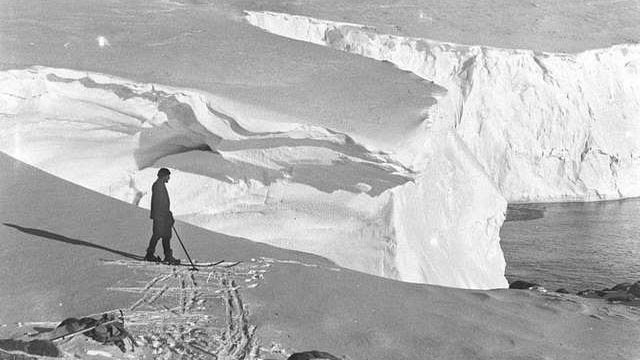
Alone on the Ice
Mawson is now completely alone, lost in Antarctica. He is sick, with his hair falling out in clumps. He is aching and starving and has seen his two friends die beside him.
But, he doesn’t give up.
Stuck in a storm for two days and unable to travel, he puts that downtime to use. He rests and writes letters in case he fails. He buries Mertz under a snow cairn and reads a burial service. He boils the last bits of remaining dog meat for his journey and then discards the cooking equipment, rearranging the sled. And finally, he heads off on his journey back to Cape Denison.
After only a few kilometres before he is forced to stop from agonising pain in his feet. Stopping to tend to them, he takes off his socks and finds, to his horror, that the soles of his feet have fallen off. The entire layer of skin has detached from his body like an insole, and underneath is just a mass of weeping blisters. He applies some lanolin and ties the soles back onto his body, wrapping them in several layers of socks.
Day by day, kilometre by kilometre, he continues. Alone on the ice, in Antarctica, refusing to die. His legs lose their skin. His fingertips become frostbitten and his nose and mouth become a hive of blisters.
A week later he is trudging along when a snow bridge collapses below him and he falls into a crevasse. At the very last minute his sled jams on the edge and stops his fall, but he is dangling loosely 5 metres below the lip of the crevasse. He starts to climb the rope attached to the sled.
Hand over hand, foot by foot, he pulls himself up to the lip of the crevasse. Exhausted, after climbing five metres vertically, he reaches the edge.
As he does, the lip collapses.
He falls again, back to where he started. The sled stays put, for now.
Dangling from the end of the rope, starving, freezing, exhausted, with blood pouring from his blackened fingers, Mawson considers ending it all. He thinks about how easy it would be to untie his harness and let go. It is a long way down, and it won’t take long. He is suffering greatly, and it would be so easy to end that suffering.
Despite this, a few thoughts keep him going. One is the thought of his fiancée and the chance to see her again. He is also driven to at least safely stow the expedition diaries somewhere visible so that others might know what had happened to the party.
And, as he dangles from the end of the rope, the blood slowly leaving his legs, he has another final thought. It is a poem, by Robert W Service. And in particular, the last few lines.
“All broken and beaten and scarred,
Just have one more try — it's dead easy to die,
It's the keeping on living that's hard.”
He chooses to have one more try. He climbs again, inch by inch, foot by foot, all the way up to the sled. Not wanting to fall again, he hooks one foot over the lip of the crevasse and drags himself out backwards. Finally out of the crevasse, he immediately passes out. He wakes up a few hours later covered in snow and decides to make camp nearby.
That night he makes himself a rope ladder and attaches it to his sled harness. That way, should he ever fall again into a crevasse, he can use it to climb out.
Over the next few days, he uses it on two separate occasions to pull himself out of collapsing crevasses.
With his body falling apart and through snow-blinded eyes, a few days later he finally spies a familiar landmark. On he goes, through gritted teeth and with searing pain.
A day or so after that, he spies a cairn of snow with a black flag on it. It is a small food depot, laid by worried members of his expedition team. They have skied out to lay the depot, stayed for a few days then skied back to base.
He has missed them by six hours.
Inside the cairn, there is a note letting him know there is a larger depot of food at the so-called ‘Aladdin's Cave’, an ice cave 34km away. He reads that the rest of the expedition teams have returned safely. It also tells him that the Aurora will leave for home in a few weeks.
With some new food, Mawson continues on alone on the ice for the next few weeks and finally makes it to Aladdin's Cave. Aladdin’s Cave is only 5km from Commonwealth Bay and he has a few days to spare. At the food cache, he sees a pineapple and some oranges and bursts into tears. It is for the food but also because it is the first thing of colour that he has seen in months. Quickly eating, he is about to leave when a blizzard sets in.
He is stuck in the cave for five days. When conditions finally clear he stumbles back to Commonwealth Bay and Cape Denison. As he arrives at base, he spies a shape off in the distance.
It is the Aurora.
It has left without him.
He has missed it by only a few hours.
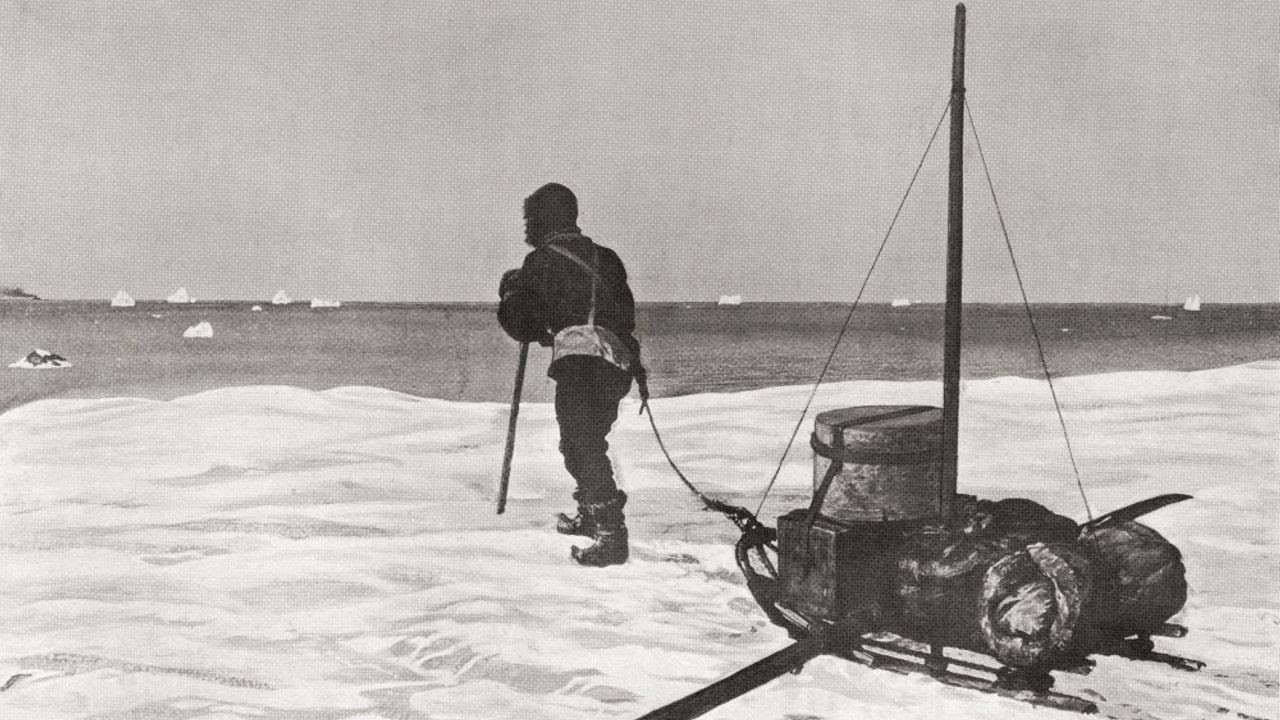
The Overwinter
Thankfully for Mawson, the base he finally stumbled into wasn’t empty. Instead, he soon encountered six of his men. They had all volunteered to stay behind in case he returned. Quickly bundled inside, the men radio the ship to return to pick him up but over the following days, the ship is unable to negotiate a passage through the ice. This encroaching pack ice has meant that Mawson will have to spend another winter in Antarctica. However, news of his survival reaches his family and makes headlines in Australia, but is quickly overshadowed worldwide by the discovery of Scott’s body and his party’s South Pole demise. His harrowing survival is bumped off the headlines by a tragic death.
In hindsight, this extra winter in Antarctica might have just saved Mawson’s life. He stumbled back to Cape Denison a physical and emotional wreck. Not only was his body ruined, but his nerves were wrecked too. Months of constant tension, where every moment could be the moment you fall to your death, had taken its toll. In addition, he had lost two of his men in awful, confronting circumstances. If he had been rushed home into the real world, and into the spotlight of the press, the pressure might have been too much for him to bear. Instead, he spends the next winter slowly healing. He writes down the story of what happens, this process helping him to come to terms with his journey and his loss. Surrounded by his companions, and with only occasional connections to the outside world, he slowly begins to mend. The expedition has been an enormous success scientifically, but it came at a great personal cost. It is only when he finally boards his ship to sail home that he manages to escape Antarctica’s clutches.
Mawson would return to Antarctica in 1929-1931 as part of a new expedition, but it appears that one journey on the ice was enough for Mawson. This expedition instead sails Scott’s ship the Discovery along the coastline to do its research. The coastline they chart now includes two familiar names.
These landmarks are the Mertz glacier and the Ninnis glacier, named after his two fallen comrades.
Walk in Mawson’s Footsteps
The base at Camp Denison still exists. Just like Mawson, it has survived in brutal conditions. A brand new polar expedition ship is leaving Hobart to visit it. The ship’s name? The Douglas Mawson.



